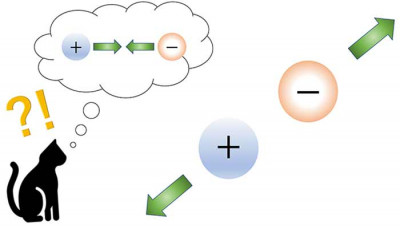Kyoto, Japan -- Sometimes common knowledge can be turned on its head and throw our entire understanding of how the universe works.
For example, we are used to thinking that particles with the same electric charge repel and those with opposite charges attract. But sometimes -- under special circumstances -- this isn't the case.
Neither an infraction of quantum field theory nor some imaginary law of repulsion is the culprit. Rather, this phenomenon of opposites repelling each other is observed in a numerical simulation known as the Schwinger model, which describes how particles interact in an electric field.
"Our research tests a new application of quantum algorithms that may help us understand problems --such as time evolution and the phase structure of the early universe -- that are difficult to address by conventional methods," says author Masazumi Honda of the Yukawa Institute for Theoretical Physics at Kyoto University.
Quantum field theory, the framework that precisely examines particle physics and quantum physics, is the foundation upon which this study is based. Various approaches offer unique ways to compute physical quantities, and choosing the most appropriate method depends on the nature of each problem.
The team has been exploring the possibilities of quantum simulations which take advantage of recent rapid advances in quantum computing hardware development.
The study opens new possibilities for quantum algorithmic applications: new angles to approach problems about the universe that are too challenging by conventional methods.
"Quantum algorithms may be the key to solving time evolution and phase structure of the early universe in finite density regions," Honda concludes.

【DOI】https://doi.org/10.1093/ptep/ptac007
【KURENAI ACCESS URL】http://hdl.handle.net/2433/268742
Masazumi Honda, Etsuko Itou, Yuta Kikuchi, Yuya Tanizaki (2022). Negative string tension of higher-charge Schwinger model via digital quantum simulation. Progress of Theoretical and Experimental Physics, 2022(3):033B01.





